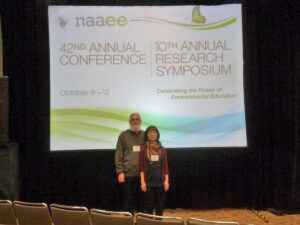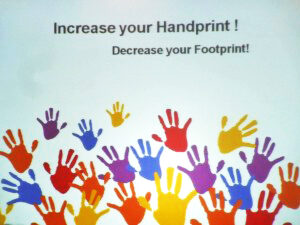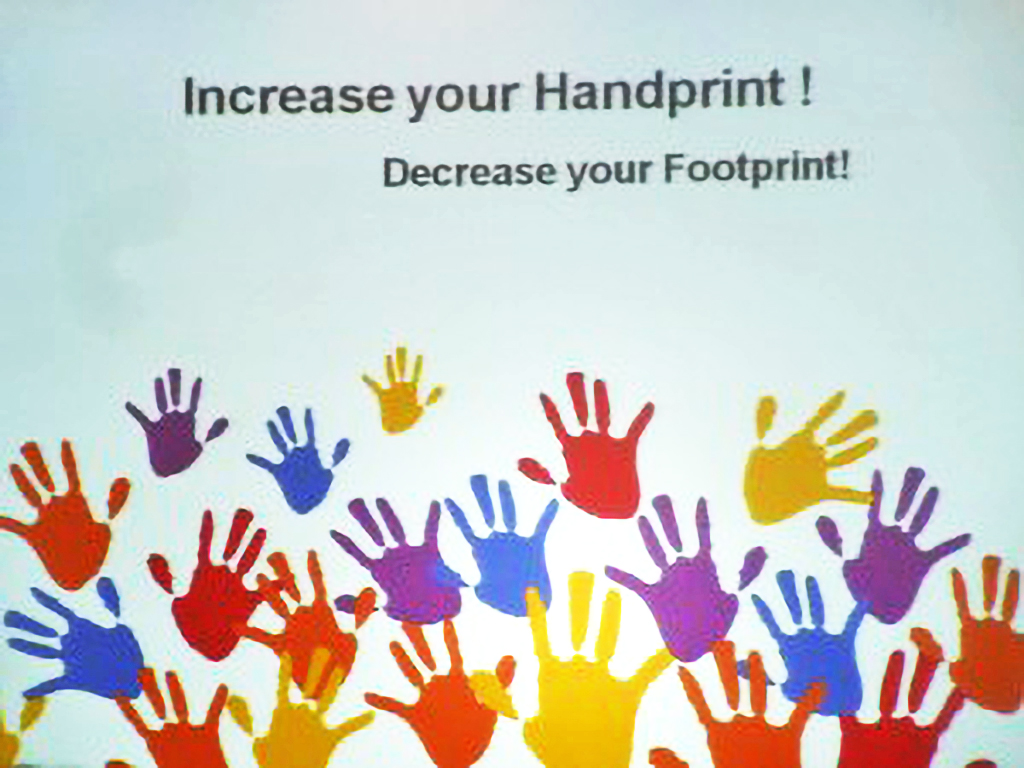On October 8, 2013, after a long trip, we arrived to Baltimore, Charm City, and buckets of rain. We were there for the 42nd Annual NAAEE (North American Association for Environmental Education) Conference. While it I was my first time attending NAAEE’s conference, Michael Bloomfield attended NAAEE in 1987.
For a first timer, the scale of NAAEE’s conference was impressive. Thanks to NAAEE and its affiliates’, the five-day conference is likely the biggest conference on environmental education, gathering thousands of academics, teachers and practitioners and offering hundreds of presentations from USA, Canada, Japan, India and other countries. It was tough to choose one session to attend out of over a dozen during each time slot.

Our attendance provided many ideas, insights and new contacts and for that we are grateful. However, we also saw opportunities for improvement.
First, more programs are needed that emphasize action rather than just awareness and its long past time environmental education connects environment with social justice, peace and public health. There were too many presentations from academics studying teaching methods and classroom layouts, and not enough sessions from people helping schools, students and society deal with pressing issues, such as climate change, water and declining bio-diversity, and their links to poverty and social justice.
Second, there was too much nature as art appreciation. It is a good start for kids to love nature, but more important we all need to realize that the environment is where we live, study, and work, not just a pretty place where we visit or take refuge.
Third, we’d like to see a stronger connection between physical operations and content. C’mon, disposal cups, one-sided copies and leaving empty rooms lit up like a Christmas tree don’t model good environmental habits.
In addition, there were some troubling sessions as well, including two looking at the impact of the tar sands development on the first nation’s communities in northern Alberta where their traditional way of life is threatened. One session profiled OSLI, an industry funded program for youth leadership development. While a laudable endeavor the unbalanced relationship between the communities and business raise concerns.
Last but not least, there should be more young participants and presenters at the conference. Even though there were opportunities for students and other youth to participate through volunteering, the registration fees for students are too high, especially when travel is required. We’d love to see more young people at round table discussions, making presentation and hosting poster sessions.
Nevertheless, we attended some excellent sessions and were especially impressed by ones that combined learning and doing. Youth Greening New York City was one of them. Molly Delano from Global Kids and her young colleague delivered an interactive and insightful presentation about their campaign, led by youth, to create and implement a plan to expand green roofs on schools. The young woman, 19 year old, was shy and excited about what she’d done with Global Kids for environmental justice. It was inspiring and hopeful to hear from her how the campaign changed her life and shaped her future. She now plans to work at the municipal level so that she could help with local environmental and social justice issues with closer connection to local communities.
Another one was Perceptions and Choices. Colin Waite from Cooper Center for Environmental Learning at University of Arizona introduced their Sunship Earth Program, a successful residential environmental education program for middle school students to help them understand energy use and other environmental issues, and improve their life styles to use fewer resources and produce less waste.
The environmental education community is vibrant and important, and the NAAEE conference is much more than a platform for practitioners to exchange ideas and share experience. It is also a place to test and acquire creative ideas, find partners for future work, as well as a great opportunity to embrace, encourage and empower younger generations to get involved and make a better future.

We look forward to NAAEE’s 43rd annual conference which Ottawa will host in 2014. And we will be encouraging NAAEE and their Canadian partners to ensure, unlike the past, that the program showcases Canadian success rather simply staging an American program here. We also will urge NAAEE to increase sessions with practical content and the participation of youth and first nations; at the same time, we will ask them to set a good example and eliminate the disposal cups and other wasteful habits. Surely everyone has their own mug by now or NAAEE can sell them one.

